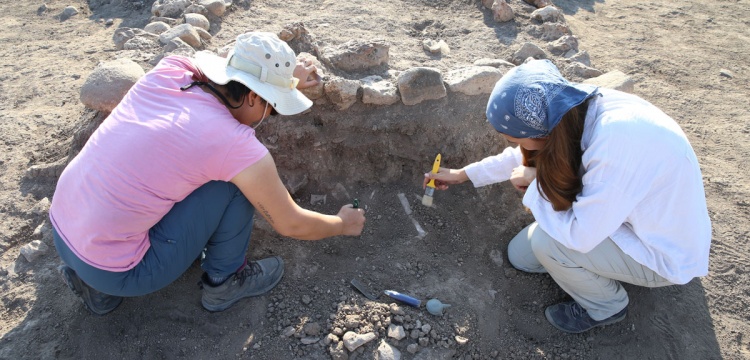7,600-year-old child and baby skeletons discovered in Domuztepe archaeological excavations

Archaeologists uncover remains of a child, an infant, estimated to be 7,600 years old, at Domuztepe Mound in Kahramanmaras province during ongoing excavation.
Archaeologists have uncovered two human skeletons, one of a child and the other of an infant, estimated to be 7,600 years old, in southern Türkiye.
The discovery was made during ongoing excavation work at the Domuztepe Mound in Turkoglu district of Kahramanmaras province. Domuztepe is recognized as one of the largest mound settlements from the Late Neolithic period.
The skeletons were found in two separate graves, with the child estimated to be around 6 or 7 years old.
Halil Tekin, the head of the excavation, said the site was first settled nearly 9,000 years ago.
“We discovered two graves, one belonging to an infant, next to the foundations of a structure related to a keyhole-shaped building,” Tekin told Anadolu. “This was a complete surprise for us, as graves are very rarely found in Domuztepe.”
Tekin said that around 40 skeletons were found in an area described as a "death pit" by another team in the same region in previous years. He added that during the Late Neolithic period, infants and children were often buried inside or near buildings, likely to maintain their connection to the home.
One of the skeletons they found belonged to an infant, and they discovered a feeding pot next to it, he said.
Diğer English News Haberleri

Archaeologist Assoc. Prof. Dr. Erhan Bıçakçı passed away

Sumerologist Muazzez İlmiye Çığ, passed away at the age of 110

Neolithicists said: Urfa kebab excellent, gobeklitepe incredible, Karahantepe wow!

